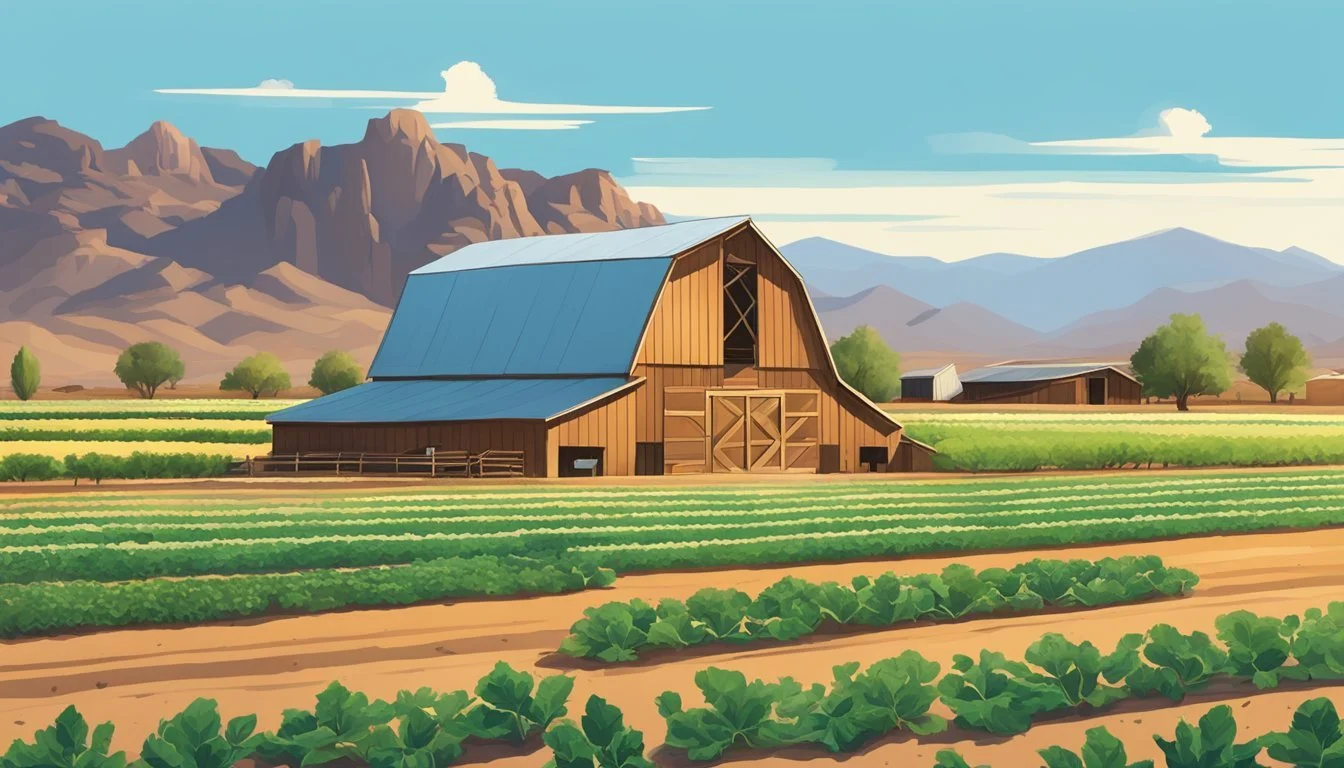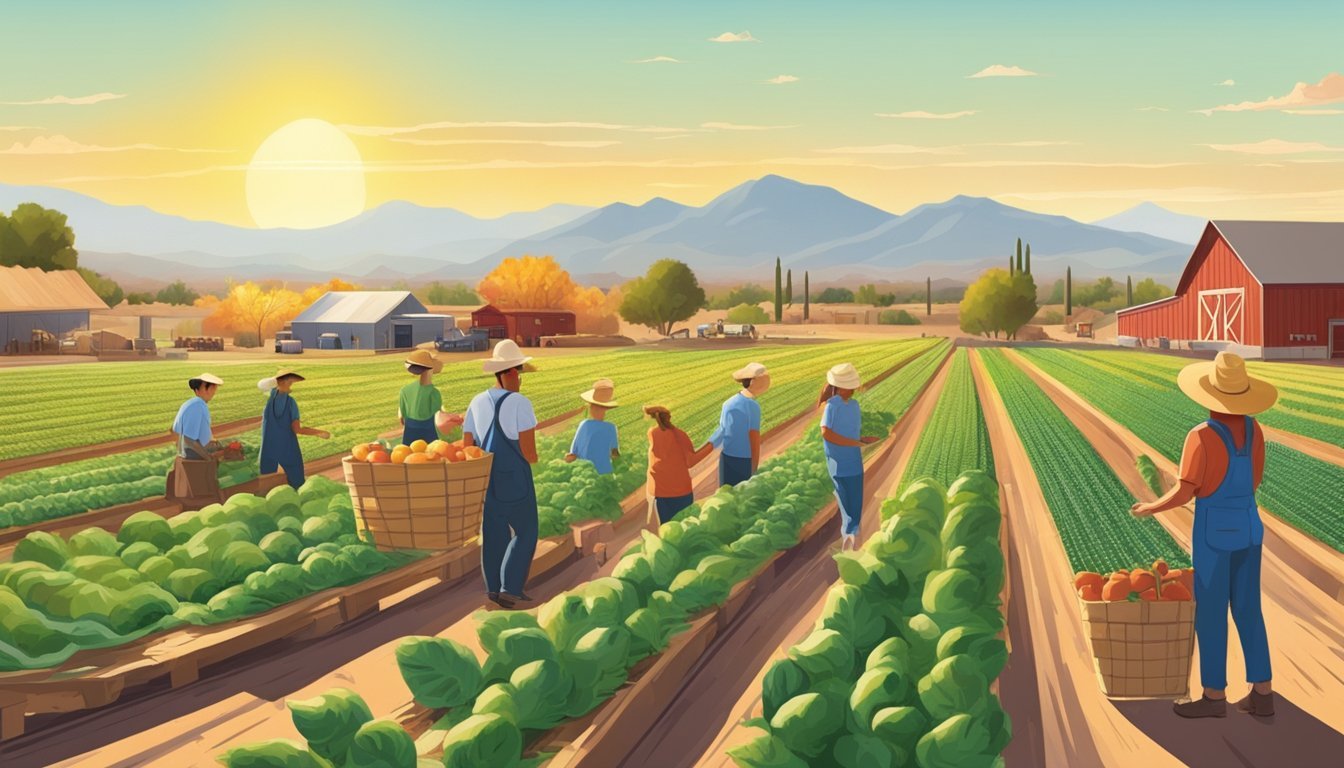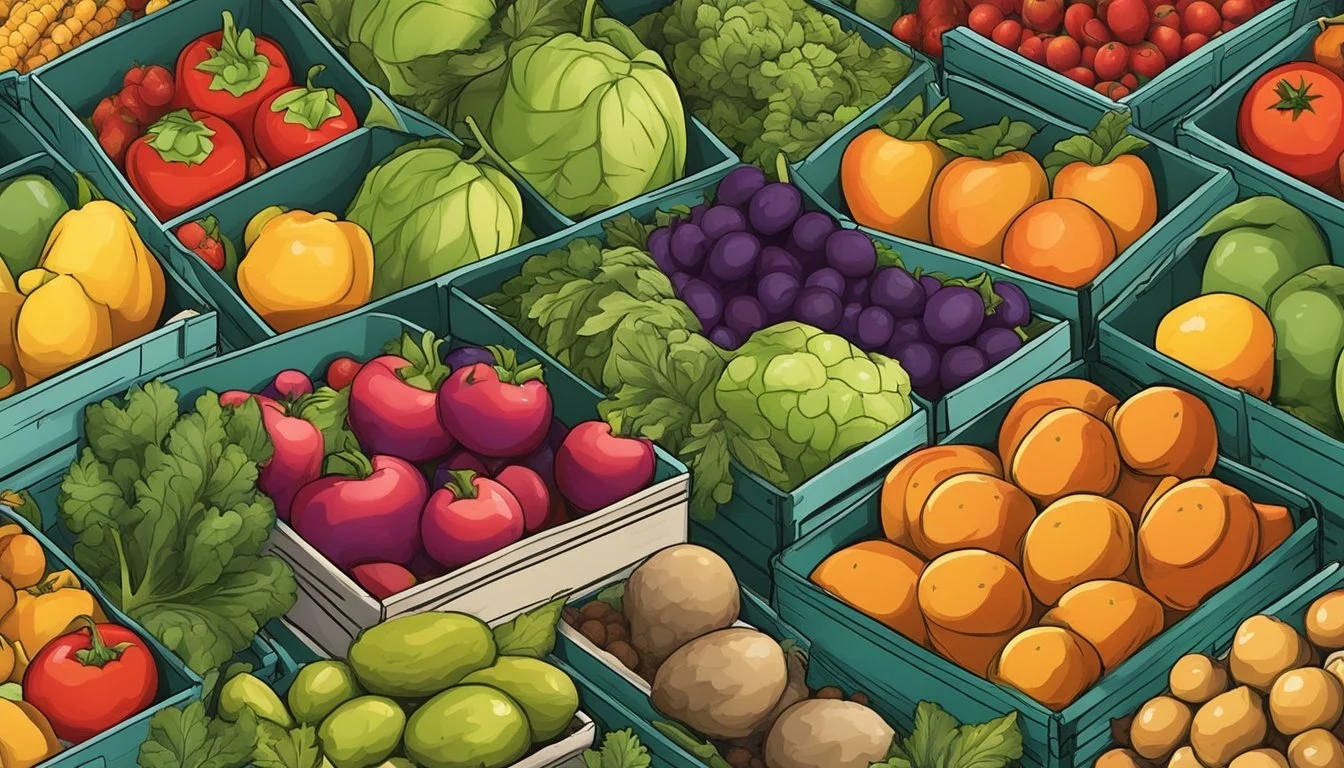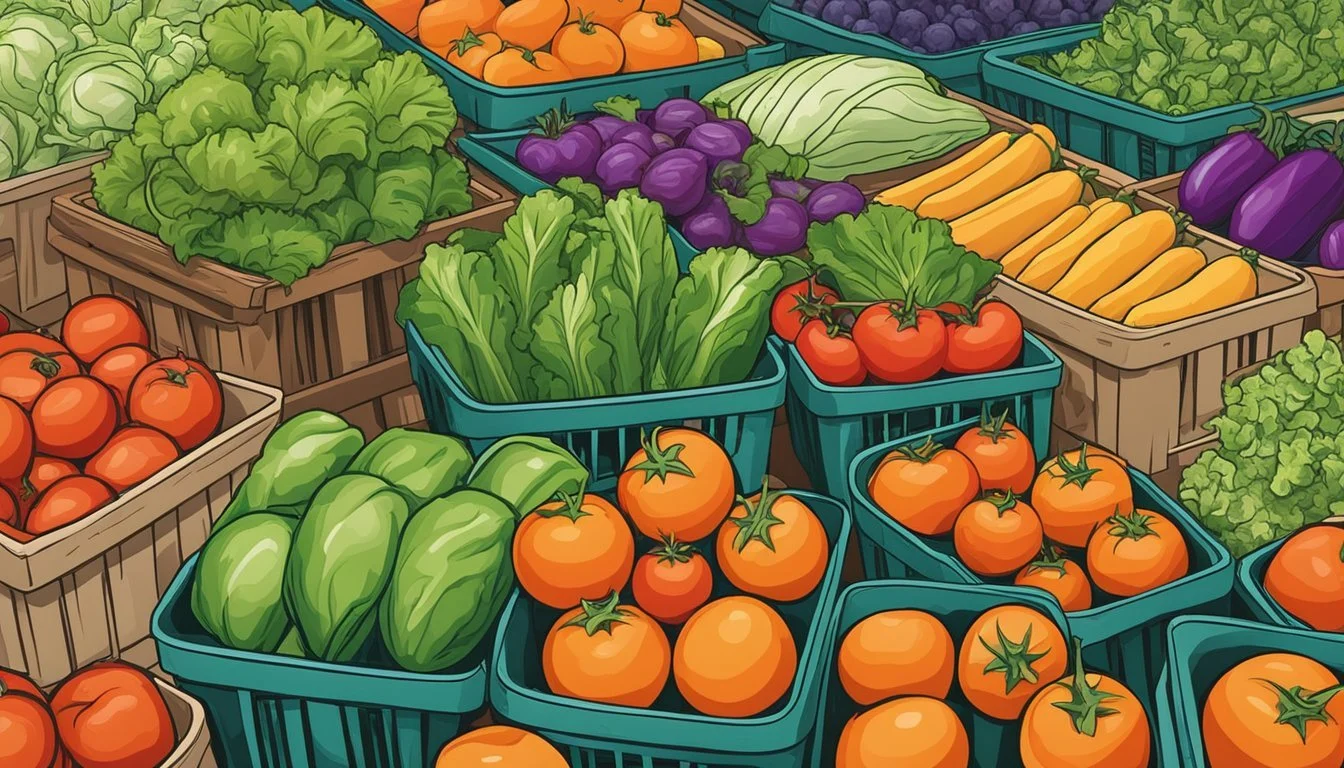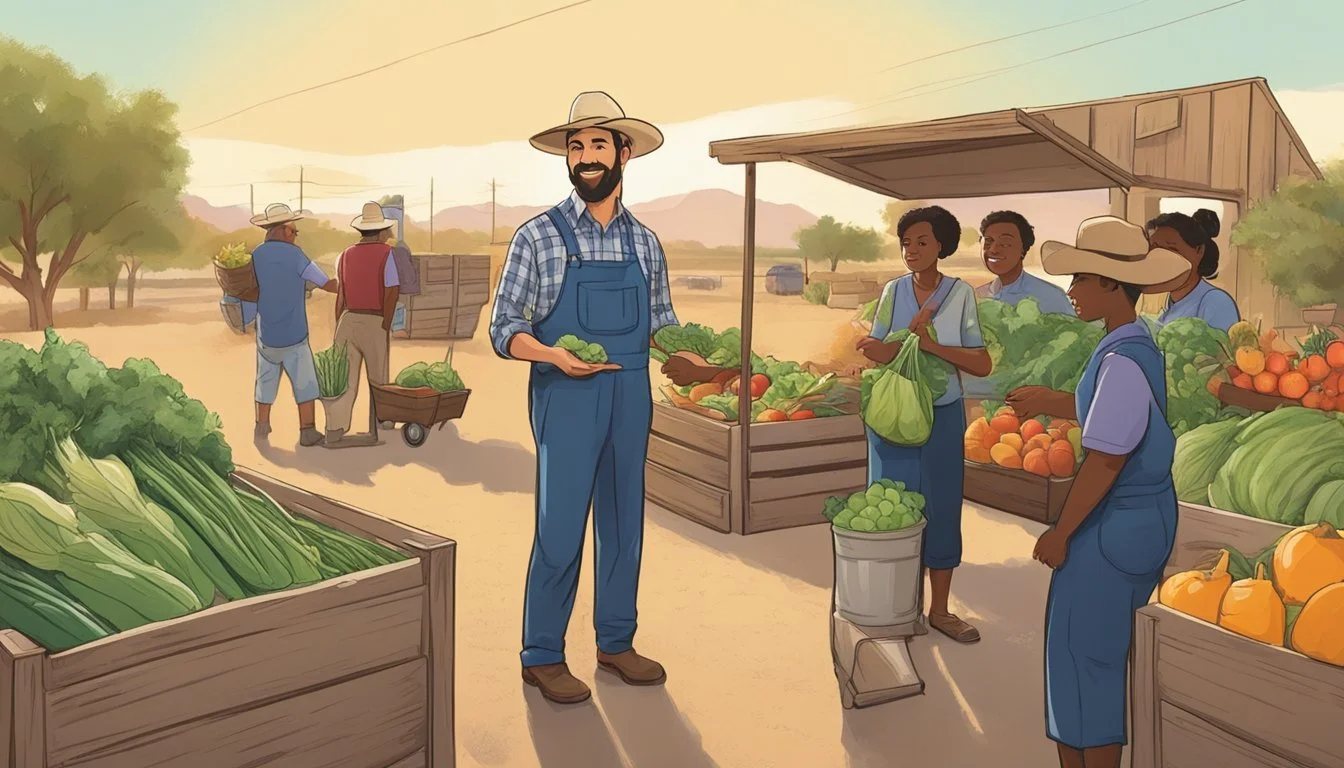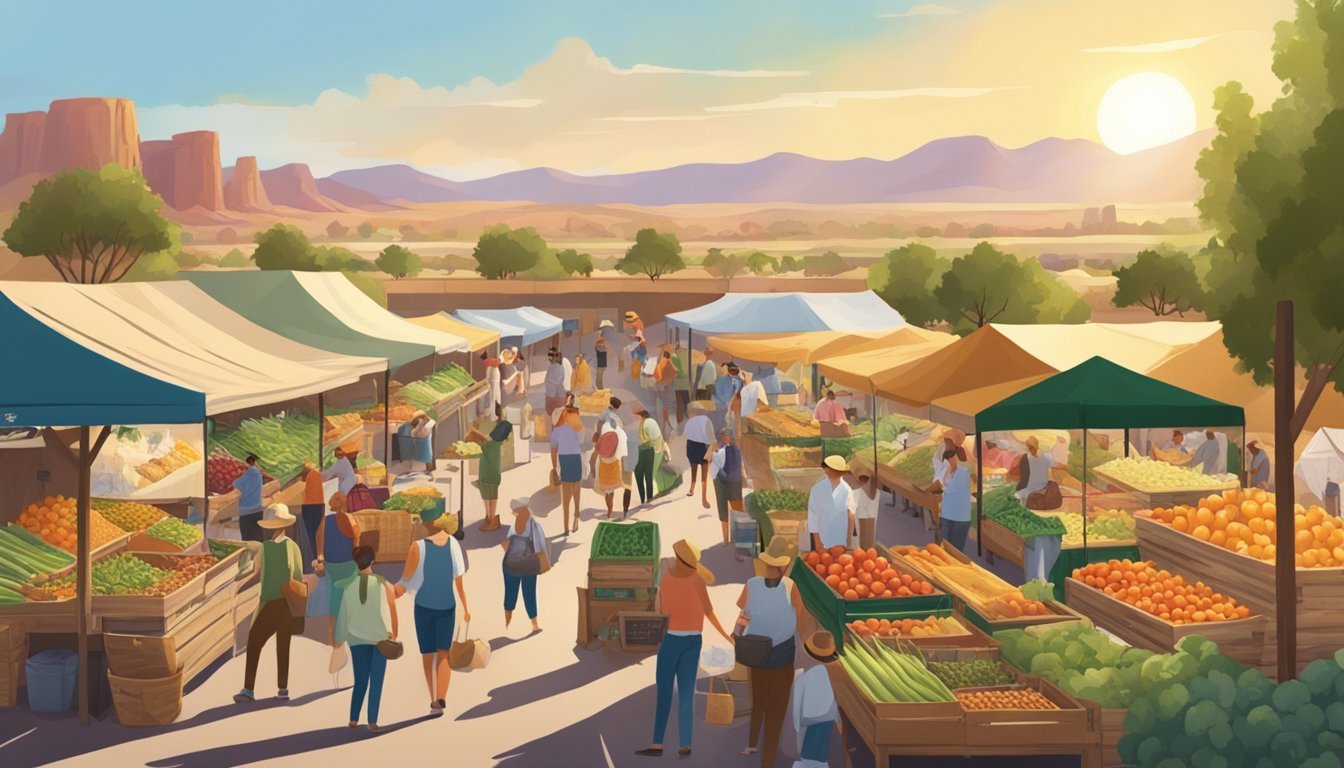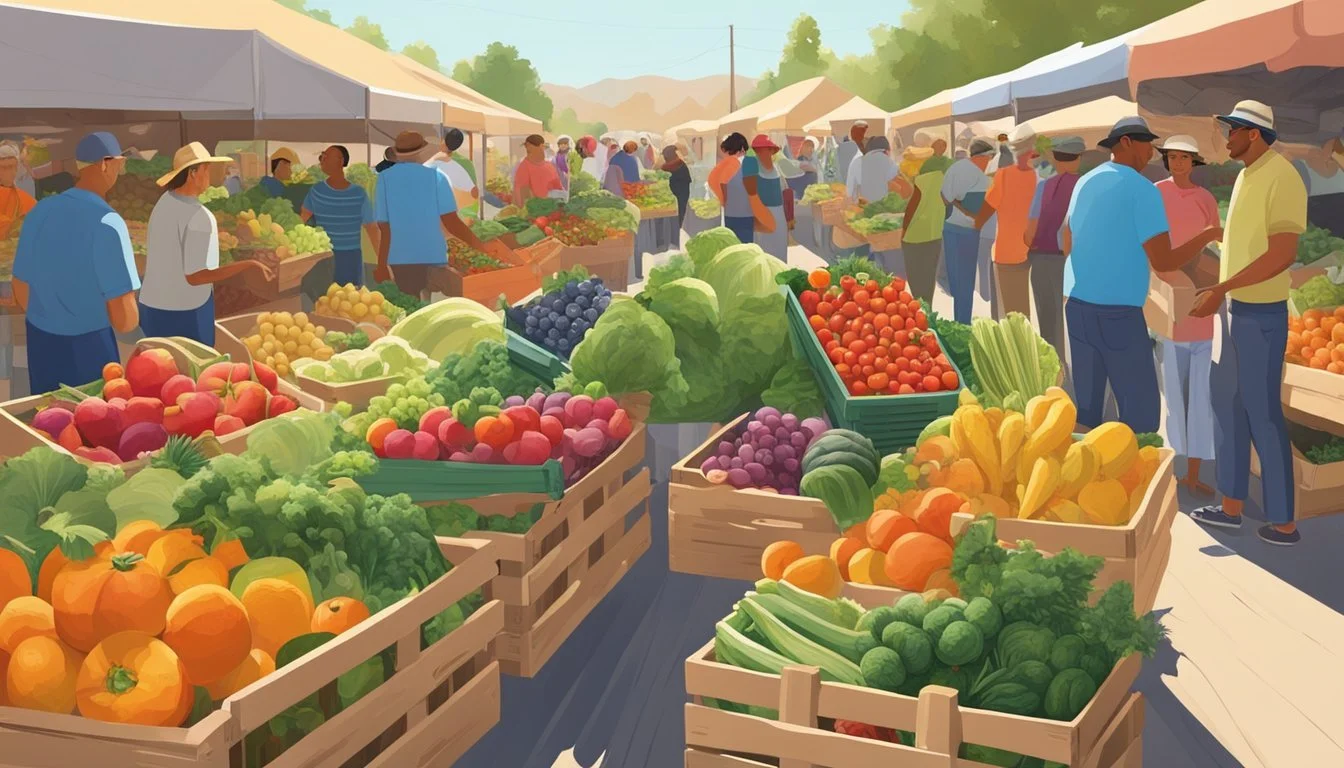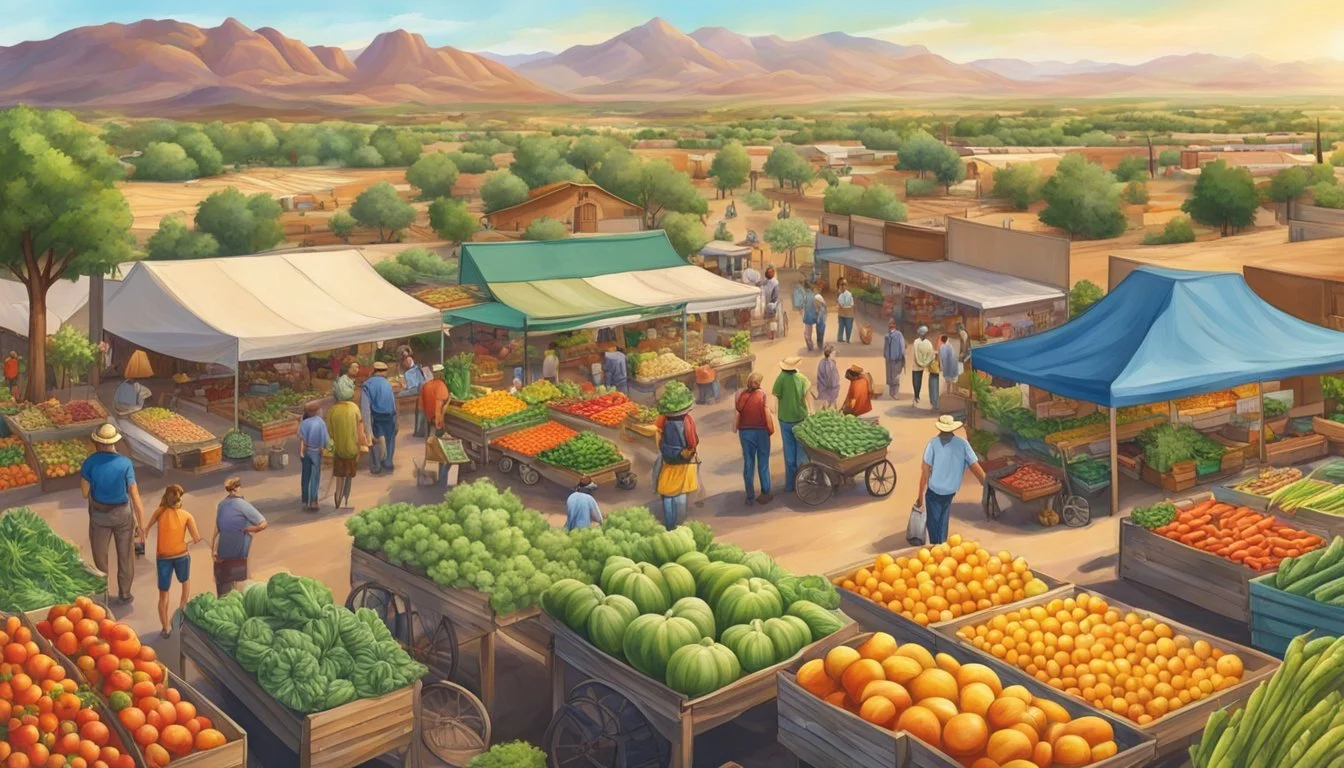Community Supported Agriculture (CSA) in Arizona
Nurturing Local Food Systems
Community Supported Agriculture (CSA) programs in Arizona connect local consumers directly with the bounty of their regional farms and gardens. By adopting a model where individuals purchase shares of a farm's harvest in advance, CSAs provide a stable financial base for farmers and allow consumers to become intimately involved with the cycle of their food. In return, shareholders receive regular distributions of fresh, locally-grown produce, often with the delight of discovering new varieties that are tailored to the region's unique climate and soil.
In Arizona, CSAs play a pivotal role in not only supporting small-scale agriculture but also in bolstering the local economy and fostering a sense of community around food. The concept transcends mere commercial transactions, as participants are invested in the success of their local farmers and, in turn, farmers are committed to delivering high-quality, nutritious offerings. The availability of varied produce shares, sometimes enhanced with local products like eggs, honey, and artisan cheeses, reflects both the diversity of Arizona's agriculture and the adaptability of CSA programs to consumer preferences.
As these programs flourish, they also contribute to Arizona's food security by encouraging sustainable farming practices and reducing the distance food travels from farm to fork. Whether through traditional CSA shares, farmyard installations, or creative collaborations like those that provide produce to senior citizens, CSAs in Arizona are an embodiment of community-centric agriculture. They demonstrate a model wherein the community's support interlinks with local farming, ensuring that eating locally is not just a trend but a lasting relationship with the land and one another.
Understanding CSA
Community Supported Agriculture in Arizona involves a symbiotic relationship where consumers subscribe to receive regular shares of produce from local farmers.
Concept and History
Community Supported Agriculture (CSA) originated as a model to bridge the gap between consumers and the farmers who produce their food. This system allows community members to become stakeholders in local agricultural efforts by purchasing shares of a farm's harvest in advance. This model secures a financial base for farmers early in the season, mitigating some of the risks associated with farming.
How It Works
In Arizona, a consumer subscribes to a CSA by buying shares of a farm's anticipated production. These subscriptions help local farmers plan their crop sizes and harvest schedules, ensuring a steady market for their products. Consumers, in turn, receive a portion of fresh, naturally grown produce throughout the farming season. This direct-to-consumer model can be financially beneficial for both parties and plays a crucial role in sustaining local agriculture.
Benefits of Joining a CSA
Joining a Community Supported Agriculture program in Arizona opens opportunities for community members to enjoy high-quality produce while supporting local agriculture. Participants commit to the well-being of local farms, gaining access to a plethora of advantages centered around health, economy, and community.
Fresh and Organic Produce
CSAs prioritize fresh, often organic, vegetables and fruits. Subscribers receive seasonal harvests directly from local farms, ensuring high nutritional quality and peak freshness. This bounty is devoid of long transportation, often picked within days, if not hours, of distribution.
Supporting Local Farmers
Subscribers' upfront or periodic payments give farmers financial stability and the freedom to focus on environmentally sustainable practices without the pressure of immediate sales. It's a direct investment in local food production which also bolsters economic growth within farmers markets and the agricultural sector.
Seasonal Eating and Diversity
CSA members naturally adapt to seasonal eating, an approach that can diversify their diets. They are introduced to a wide range of vegetables and ingredients they might not typically select at a grocery store. This not only elevates culinary experiences but also reflects the local agricultural calendar, with items at their peak flavor.
Building Community Connections
By participating in a CSA, members form meaningful partnerships with local farmers. This mutual support forges a sense of community and deeper understanding of local food systems. Additionally, members often come together for events, share recipes, and connect over food, further enriching community ties.
CSA Success Stories in Arizona
In Arizona, initiatives such as Community Supported Agriculture (CSA) programs have bolstered the link between local farmers and consumers, contributing to successful local economies and sustainable agricultural practices.
Tucson CSA
Tucson CSA stands out as a beacon of success in Arizona's CSA landscape. It began with diligent groundwork laid by Philippe Waterinckx, who was inspired during a research project at the University of Arizona. The program has flourished, offering Tucsonans access to a variety of local, organic produce, with kale and chard being among the favorite greens.
Sleeping Frog Farm
Sleeping Frog Farm is another testimonial to the thriving CSA model in Arizona. Driven by passion and commitment, this farm supplies local residents with fresh, sustainable food options. Its contributions have nurtured a story of growth which resonates with the fundamentals of CSA – community, health, and sustainability.
Crooked Sky Farm
Included in these narratives of achievement is Crooked Sky Farm, with Farmer Frank at its helm. Crooked Sky Farms' partnership with CSA programs, including that of Tucson's, helps ensure a steady supply of diverse crops, reinforcing the success stories of local agriculture. Its offerings, from vibrant kale to hardy chard, exemplify the farm's dedication to quality and community support.
Various CSA Models
Community Supported Agriculture in Arizona adopts diversified models to cater to various consumer preferences and enhance local agricultural economies through direct support from consumers to producers.
Traditional Share-Based Model
The Traditional Share-Based Model is the cornerstone of CSA programs. In this model, members purchase shares of a farm's harvest in advance, ensuring financial support for the producer before the growing season begins. Shareholders typically receive a weekly or bi-weekly allotment of fresh produce, which may include a variety of vegetables and fruits. For instance, Crooked Sky Farms offers seasonal shares of produce grown using organic methods.
Market-Style CSA Model
Market-Style CSA, in contrast, grants more flexibility to members. Instead of pre-packed boxes, members receive CSA credits which they can use at participating farmers markets or farm stands. This allows them to choose the produce that fits their preferences while still supporting local CSA programs. The model not only gives consumers control over their selection but also reduces potential waste from unwanted items in a traditional CSA share.
CSA for Meat, Eggs, and Cheese
In addition to produce, some Arizona CSA programs focus on animal products like meat, eggs, and cheese. These CSAs typically operate by offering shares of meat from various livestock or assortments of dairy products such as goat cheese. Producers provide ethically raised animal products directly to consumers, who in turn can trace the source of their food while supporting sustainable practices.
How to Join a CSA
Community Supported Agriculture (CSA) in Arizona offers a model for members to receive fresh, local produce directly from farmers through a subscription-based service. Prospective members can support local agriculture and obtain seasonal food by joining a CSA program. Here is how they can get started.
Finding a Local CSA
To start, prospective members should seek a CSA program in their area. LocalHarvest is an online tool where individuals can search for nearby CSA programs. They can simply enter their location and find a list of CSAs along with details about each. People can also contact local farmers' markets or farming cooperatives for CSA recommendations.
Membership and Subscription Process
Once a local CSA is selected, individuals typically contact the chosen program to inquire about subscription availability and membership details. Specifics around membership, subscription fees, and commitments vary across programs. Most CSAs offer online sign-up forms on their websites, or one can directly reach out via phone or email to establish their membership. Payment options are generally provided during this step, including any assistance or discounts that may help, such as CS-Aid.
Selecting the Right Share Size
CSAs usually provide different sizes of shares to cater to varying consumer needs. Share options may include:
Single share: suitable for individuals or those with minimal produce needs
Family share: designed to meet the needs of a family or a household with higher consumption
Prospective members might consider factors such as household size, cooking frequency, and budget when deciding. They can often find advice from the CSA provider or other experienced members to help determine the most appropriate share size. It's beneficial to understand that the share size reflects the volume of produce one will receive and often the membership cost.
Financial Considerations
Community Supported Agriculture in Arizona involves financial commitments and benefits for members. This section looks extensively at the costs associated with CSA memberships, the inclusive payment options, and the Arizona Double Up Bucks program aimed at making fresh produce more accessible.
Understanding CSA Costs
When a consumer joins a CSA, they typically pay a subscription fee up front. This fee covers the cost of produce for the entire season and enables farmers to plan for the season, buy seeds, and cover initial operational costs. For Arizona's CSA members, these costs are an investment in the quality and sustainability of local food systems. It is important to note that while this lump sum may seem high at first glance, the cost per week is often competitive with, or lower than, traditional grocery store prices. However, members should be aware of the risks—such as crop failure or other unforeseen issues—that could affect the quantity and quality of produce they receive.
Payment Options and SNAP/EBT
Arizona CSAs are increasingly flexible with payment options, often allowing members to make payments in installments. Most notably, several CSAs accept Supplemental Nutrition Assistance Program (SNAP) benefits through Electronic Benefit Transfer (EBT). This allows low-income individuals to use their benefits to purchase fresh, local produce. Furthermore, CSAs that accept SNAP/EBT may also participate in grant programs that can help stretch SNAP dollars further for purchasing fresh fruits and vegetables.
Arizona Double Up Bucks Program
The Arizona Double Up Bucks program is a further incentive that doubles the buying power of SNAP recipients at participating farmers' markets and CSAs. For example, if a SNAP participant spends $10 from their SNAP benefits on fresh produce, they receive an additional $10 in Double Up Bucks to spend on Arizona-grown fruits and vegetables. The program thus encourages healthy eating and supports both local consumers and farmers financially. Participation in this program can considerably reduce the financial burden for SNAP recipients and provide them with access to a wider range of nutritious food options.
Impact on Local Economy and Environment
Community Supported Agriculture (CSA) in Arizona has observed beneficial ripple effects across both economical and environmental spectrums. These initiatives encourage supporting local farms, bolstering community ties and promoting sustainable food production.
Economic Benefits for Farmers and Communities
Local farmers gain economic stability through CSA models as they receive upfront payments from members. This direct-to-consumer method alleviates financial pressure by ensuring a stable market for their produce. Communities benefit as dollars circulate within the local economy, enhancing the financial well-being of the area.
Financial Commitment: Community members pay at the start of the season, granting farmers a secure income.
Market Assurance: Farmers gain immediate access to a dedicated customer base.
Community Development: Local spending spurs economic growth within the community.
Environmental Sustainability
The adoption of CSAs in Arizona has had a pronounced impact on environmental sustainability. Local farms often employ practices that are more eco-friendly compared to larger agricultural entities.
Reduced Carbon Footprint: Shorter travel distances for food distribution lessen greenhouse gas emissions.
Support for Eco-friendly Practices: CSA members' investments enable farmers to maintain or transition to sustainable methods.
Local Preservation: Investing in local farms helps protect the environment by preserving farmland and natural habitats.
By fostering an economy that values local, sustainable food production, Arizona's CSA programs exemplify a practical model for enhancing community resilience and environmental health.
Challenges and Considerations
Community Supported Agriculture (CSA) models in Arizona face various challenges that require careful consideration. It is essential for the sustainability of the CSA to address inherent risks and manage the diversity of crops efficiently.
Addressing the Risks
CSAs often grapple with the uncertainty of agriculture, including weather fluctuations and water supply issues that directly affect farms in Arizona. Farmers and consumers share the risks of crop failure, which can be particularly daunting for small-scale producers of delicate items like flowers or specialty crops. To mitigate these risks, CSAs implement strategies such as including a variety of produce, with some crops being more drought-tolerant, or diversifying offerings to include other products such as pork, beef, or chicken, which are less weather-dependent.
Risk Management Strategies:
Weather: Utilization of greenhouses and shade structures.
Water Supply: Adoption of water-efficient irrigation methods.
Market Fluctuations: Diversification of CSA shares to include animal products.
Crop Failure: Investment in crop insurance or reserve funds.
Managing Crop Diversity
For Arizona's CSA programs, managing crop diversity is crucial in ensuring a year-round supply of fresh, local produce. Participating farms must strategically choose a variety of crops that can thrive in the region's climatic conditions while also meeting consumer demand. This could range from robust root vegetables that withstand harsher conditions to delicate greens that require more attentive care. Offering a broad selection helps in maintaining subscriber interest and supporting farmers' financial stability.
Diversity Maintenance Approaches:
Seasonal Planning: Rotating crops according to seasons to maximize yield and quality.
Consumer Preferences: Regularly surveying CSA members to inform crop choices.
Complementary Planting: Planting flowers that attract pollinators to support healthier crop yields.
By employing these strategies, CSAs in Arizona work towards overcoming the challenges that face them. They strive to maintain the delicate balance between the unpredictability of farming and the reliable service their members depend on.
Recipes and Cooking Tips
Community Supported Agriculture in Arizona provides an assortment of fresh, seasonal produce which can be transformed into delicious meals. Here are practical tips and ways to use your CSA bounty in the kitchen.
Using Seasonal Produce
When cooking with seasonal produce, chefs recommend recipes that enhance the natural flavors of the fruits and vegetables. For example, spring brings asparagus, which can be roasted with a touch of olive oil and salt, while summer berries are perfect for fresh salads or fruit-based desserts. (What wine goes well with fruit-based desserts?) A variety of recipes exist specifically designed to highlight the unique qualities of each season's fresh food.
Spring: Asparagus ribbon salad, Strawberry spinach salad
Summer: Berry crumble, Grilled vegetable medley with farm-fresh corn
Fall: Roasted butternut squash soup, Apple and pear crisp
Winter: Hearty kale and root vegetable stew, Citrus winter salad
Preserving Fresh Food
To extend the enjoyment of fresh food from the CSA box, preservation methods come in handy. Pickling, canning, and freezing are all effective ways to preserve fresh produce. For instance, one might make refrigerator pickles with cucumbers or a vibrant tomato sauce that can be canned and stored. Here is a simple guideline to help preserve different types of fresh produce:
Leafy Greens: Blanche and freeze spinach or kale for later use in soups and smoothies.
Herbs: Make pesto or herb-infused oils, or dry and store them for seasoning.
Berries: Freeze on a tray and then store in airtight containers for off-season smoothies or baking.
Root Vegetables: Store in a cool, dark place or can as pickles or in stews.
Frequently Asked Questions
What is a CSA (Community Supported Agriculture)?
A CSA allows consumers to purchase a "share" of produce directly from local farmers. Members pay in advance for a season’s worth of agricultural products, which are typically delivered weekly.
How does CSA membership benefit local farmers in Arizona?
Membership provides farmers with upfront capital to cover early season costs. It also creates a guaranteed market for their produce, reducing the risk of unsold goods.
What kind of produce can members expect?
Members can expect a variety of Arizona-grown fruits and vegetables throughout the season. The contents will vary based on harvest availability.
How does FarmBox Arizona compare to a typical CSA?
Unlike traditional CSA programs that source exclusively from one farm, FarmBox Arizona offers a broader variety because it sources from multiple farms. This allows for more variety in each box.
Can members customize their produce box?
Some CSA programs may offer customization options, while others provide a standard box. FarmBox Arizona, for instance, suggests more flexibility and convenience than typical CSAs.
Is all the produce sourced locally?
The emphasis of a CSA is on local produce. Farmbox Arizona confirms that it delivers produce from local farmers.
What is the cost range for CSA membership?
Membership costs generally range between $400-$700 annually, depending on the CSA program and the variety of produce offered.
Membership Feature Detail Local Produce All produce is sourced from local Arizona farmers. Cost Range $400-$700 annually depending on the CSA and produce type. Variety and Customization Varies between programs, with some offering more options. Benefit to Local Farmers Upfront payments and guaranteed market for their goods.
Latest News and Updates
In Cochise County, a farmer-led collective has emerged, primarily comprised of small organic growers. They are determined to safeguard their agrarian interests and cater to the communal needs in southern Arizona. Their aim is to remain steadfast on their ancestral lands, primarily through practices that benefit both the land and the local community.
Central Arizona's farms and Phoenix-area food businesses are reinforcing their commitments to community-supported agriculture (CSA). Despite the challenges posed by the pandemic, these entities have bolstered the popularity of CSA boxes. The model provides mutual support for local businesses and ensures fresh produce for the community.
While the Farmyard in Phoenix has shifted its focus from offering CSA programs to installing and maintaining edible gardens, it serves as an embodiment of adaptability within the domain of local agriculture.
The Gila Farm Cooperative is noteworthy for its two-fold mission: supporting local agriculture while aiding the refugee population in Arizona. Their CSA program benefits consumers and provides indispensable support for refugees who contribute to the agricultural sector.
Arizona's farmers are unwavering in their efforts to deliver nutritious food to residents. Joining a CSA program remains a robust method of supporting these local businesses. Customers who sign up for these programs typically receive a regular supply of seasonal produce, which bolsters local agriculture and sustains the community with wholesome food.
Resource Contribution Farmer-led Collective Advocacy for small growers, community engagement CSA Boxes Local business support, food distribution Gila Farm Cooperative Integration of agriculture with refugee support CSA Programs Source of seasonal, local produce; support for local farms

